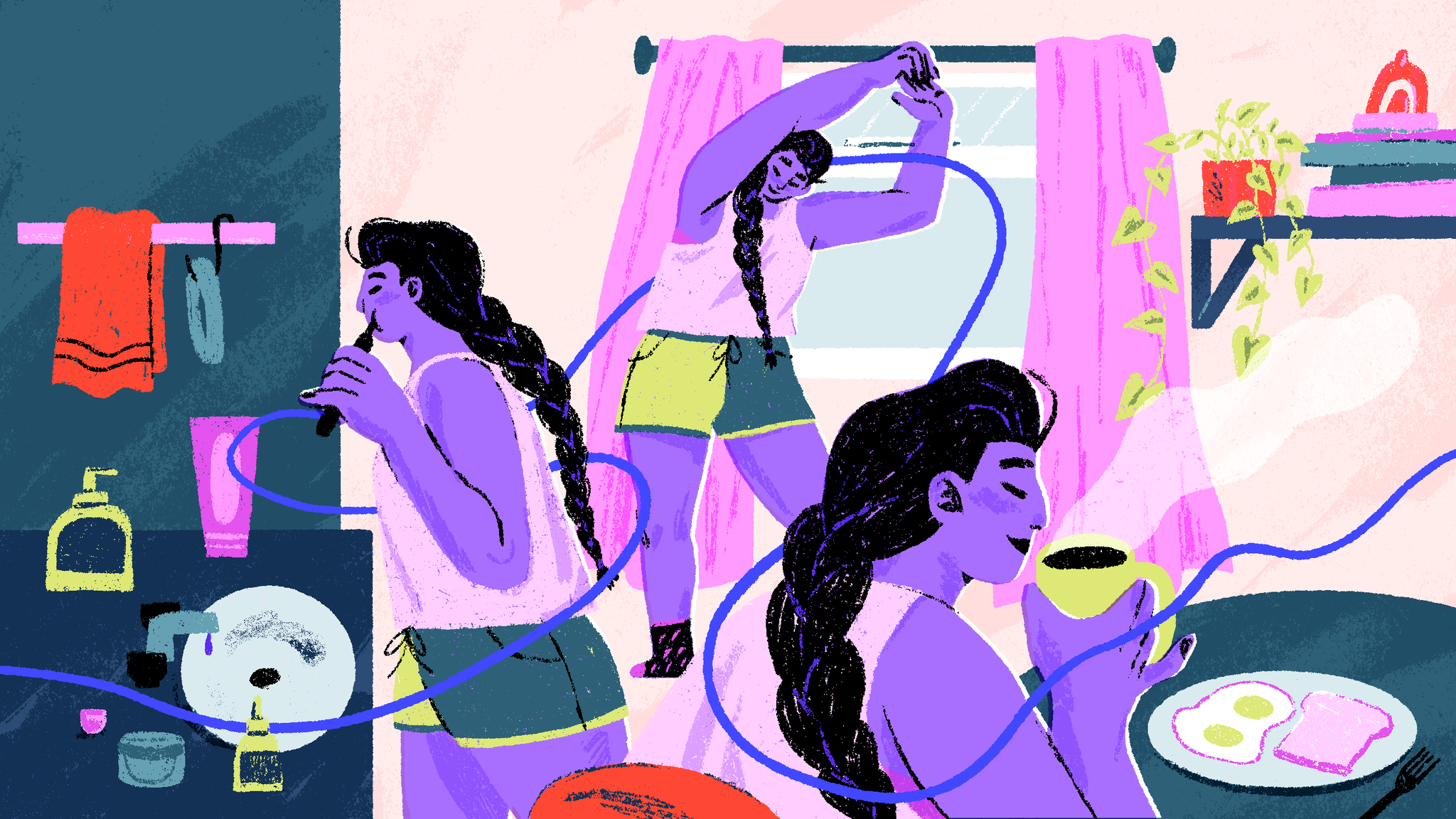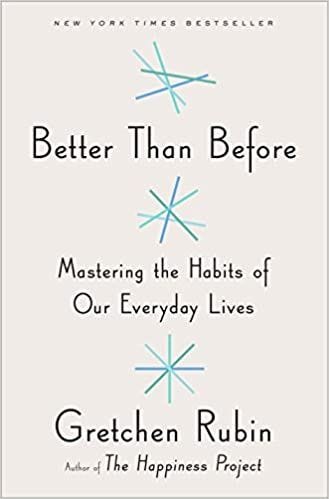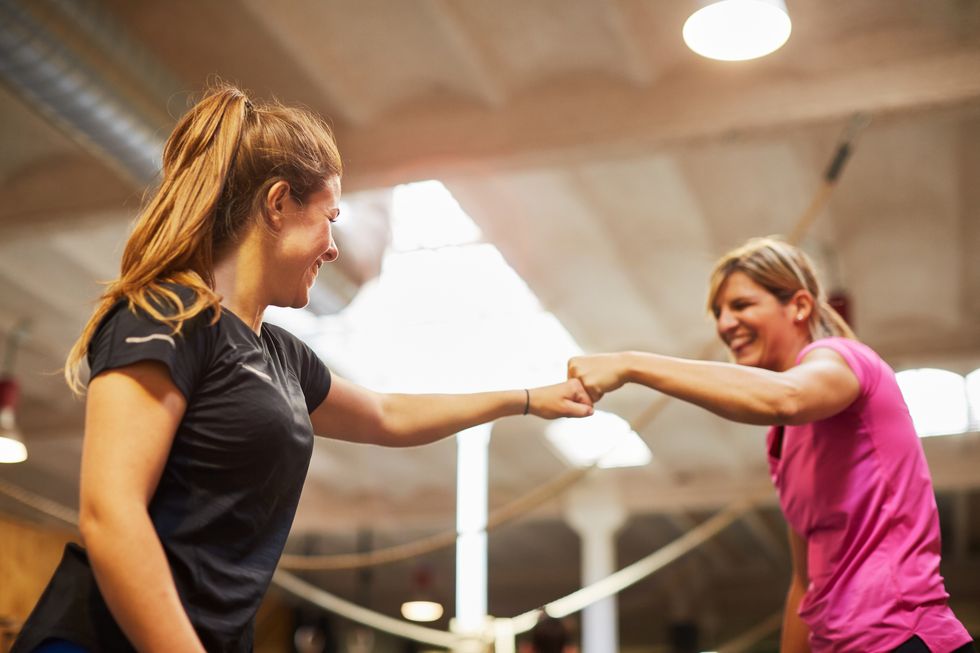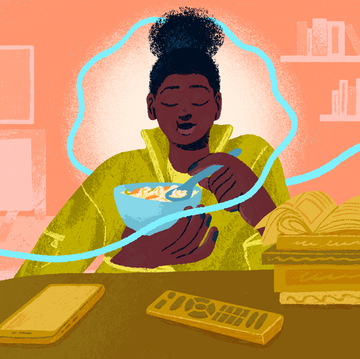Caring for our mental health has become more essential than ever before. The way we treat our bodies, how and with whom we spend our time, and what thoughts are center stage in our minds are vital. In the monthly Shondaland series A Path to Well-Being, we’re sharing science and strategies to help you better understand and manage your well-being.
For most students across the country, August marks the end of summer and the start of the school year, when lazy mornings and late nights give way to structured days, classes, and homework.
Back-to-school season requires new routines, which makes it an ideal time to create (or revisit) healthy habits. As we shift our schedules, opportunities open up to implement new behaviors, whether that’s creating a morning routine to help get everyone out the door with ease or establishing an evening ritual to encourage an earlier bedtime.
Whether or not anyone in your household is classroom bound, the sense of a fresh start as summer winds down and fall begins provides a “clean slate” that makes it easier to embrace new habits, according to happiness expert and Better Than Before author Gretchen Rubin.
Good or bad, habits form the architecture of our lives. Studies find that as many as half of our daily behaviors are habitual, so having good habits makes it easier to be happier and healthier. Routinized actions require less conscious thought than novel ones, which is great if you automatically stretch and meditate every morning without thinking about it, and less good if you unconsciously snarf a bag of Doritos every time you watch The Real Housewives.
By consciously creating healthy habits, we make desired behaviors automatic, which frees up brain space to be more creative and less stressed. Habits and routines also provide grounding predictability in an unstable world, says Rachel Moore, a licensed marriage and family therapist based in San Diego, California. “That can really help us center,” she says. “When there’s so much going on that’s unexpected, surprising, shocking even, it’s really helpful to have these little moments in time that we can have for ourselves.”
Make the most of the clean slate back-to-school season brings by installing supportive routines to carry you through the end of the year and beyond. Try these expert tips to make it easier.
Start small
Consider launching your new habit with an effort so tiny, you don’t need any willpower or discipline to do it, suggests Stanford University professor B.J. Fogg, author of Tiny Habits: The Small Changes That Change Everything. “You set the bar low, like floss one tooth, so you can do it easily and without motivation, no matter what,” says Fogg, who began his daily flossing habit by flossing a single tooth.
For instance, planning to do 10 push-ups a day is too big a goal, he says. Instead, resolve to do one push-up. Starting small allows for consistency and a feeling of success. As you continue to practice the new habit, it gets easier, which means you need less motivation to do more. “The easier the behavior, the less motivation you need,” Fogg says. “I can floss all my teeth, easily, within 15 seconds now.”
Celebrate often
Contrary to popular belief, it’s not just repetition that creates habits. It’s the emotion connected to those behaviors. Fogg suggests you should feel good about the changes you’re making, even if they’re just baby steps in the desired direction.
“We’ve been trained in our culture like, ‘This wasn’t a big achievement. Why should I feel good about it? I should just criticize myself for not doing more,’” Fogg says. “A big part of my work is to help people see that you change best by feeling good, and that tiny can become transformative.”
Experiencing positive emotions and a sense of celebration when performing a behavior helps cement the new habit and makes it something we want to repeat, Fogg says, as our brains begin to connect that good feeling with the action taken. (Music also helps, and Fogg has started to create his own inspirational tunes).
Don’t wait to celebrate either. If your goal is to spend 30 minutes at the gym, celebrate as soon as you arrive. “Your brain needs to associate the performance of the behavior with the positive emotion,” Fogg says, “so the timing matters.”
Practice habit pairing
The shift in schedules when school starts opens up new opportunities for habit pairing: linking desired behaviors to existing habits, times of day, or pleasurable indulgences. Habit stacking — attaching a new behavior to an existing one — is a powerful way to help make routines stick. We all have scores of habits we perform each day without thinking: brushing our teeth, making our morning coffee, grabbing the keys before leaving the house. These are prime opportunities for attaching new behaviors.
For example, turning on the coffee pot could become your cue to meditate for two minutes. The kids sitting down to do homework can be a reminder to do some reading for yourself. Fogg writes in Tiny Habits that he decided to do two push-ups after every time he went to the bathroom. Two push-ups quickly became 10, and now he does at least 50 push-ups a day.
Moore likes to use the clock as a cue, attaching her morning and evening habits to the number nine. She gets her workday started at 9 a.m., and 9 p.m. is for doing the dishes and starting her bedtime routine. “It’s made life so much simpler for me,” she says, “because all I had to do was focus on the number nine.”
Another effective pairing strategy is to link a beloved show or podcast to a desired habit. The key, according to Rubin, is to make the pairing inextricable. “If you want to do one thing, you have to do the other,” she says. For example, you can only watch Bridgerton while on the treadmill, or you only listen to The R Spot podcast while doing food prep for the week. This way, the desire to keep up with your favorite show motivates you to stick to your new habit.
Make it fun
Starting small so you can feel successful with your new habit, celebrating your wins, and linking desired behaviors to things we already love, helps make building new habits more fun. Another classic strategy is to enlist a loved one in your quest for a new habit, such as making after-dinner walks a family affair or using a weekend hike for catching up with a friend.
If you’re starting an exercise habit, consider treating yourself to some snazzy new sneakers you can’t wait to wear. Or splurge on a meditation cushion that makes sitting silently more appealing.
Finally, cut yourself some slack, Moore says. Building new habits takes time and effort — two things that can be hard to hang on to when life gets hectic. “Along with the fun factor, one important key is not to feel guilty if you fall off your routine,” she says. “It could happen for various reasons, and a lot of those reasons may be out of your control. This is life, so don’t feel bad about yourself or beat yourself up. The important part, as far as routines go, is to say, ‘Okay. Let’s start again.’”
Sandy Cohen is a writer, health and wellness coach, and host of the Inner Peace to Go podcast. Follow her on Twitter @YouKnowSandy.
Get Shondaland directly in your inbox: SUBSCRIBE TODAY


















